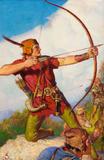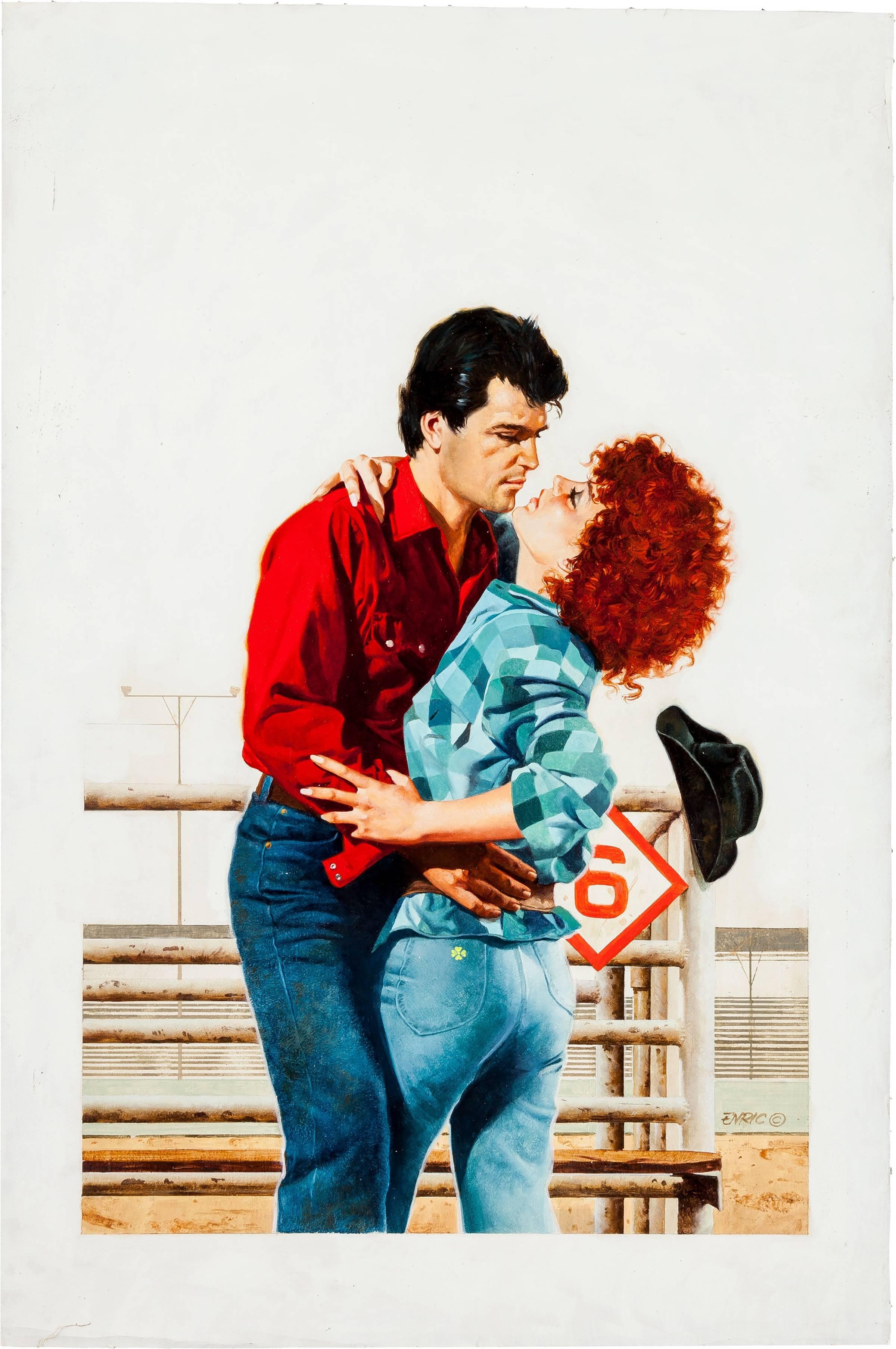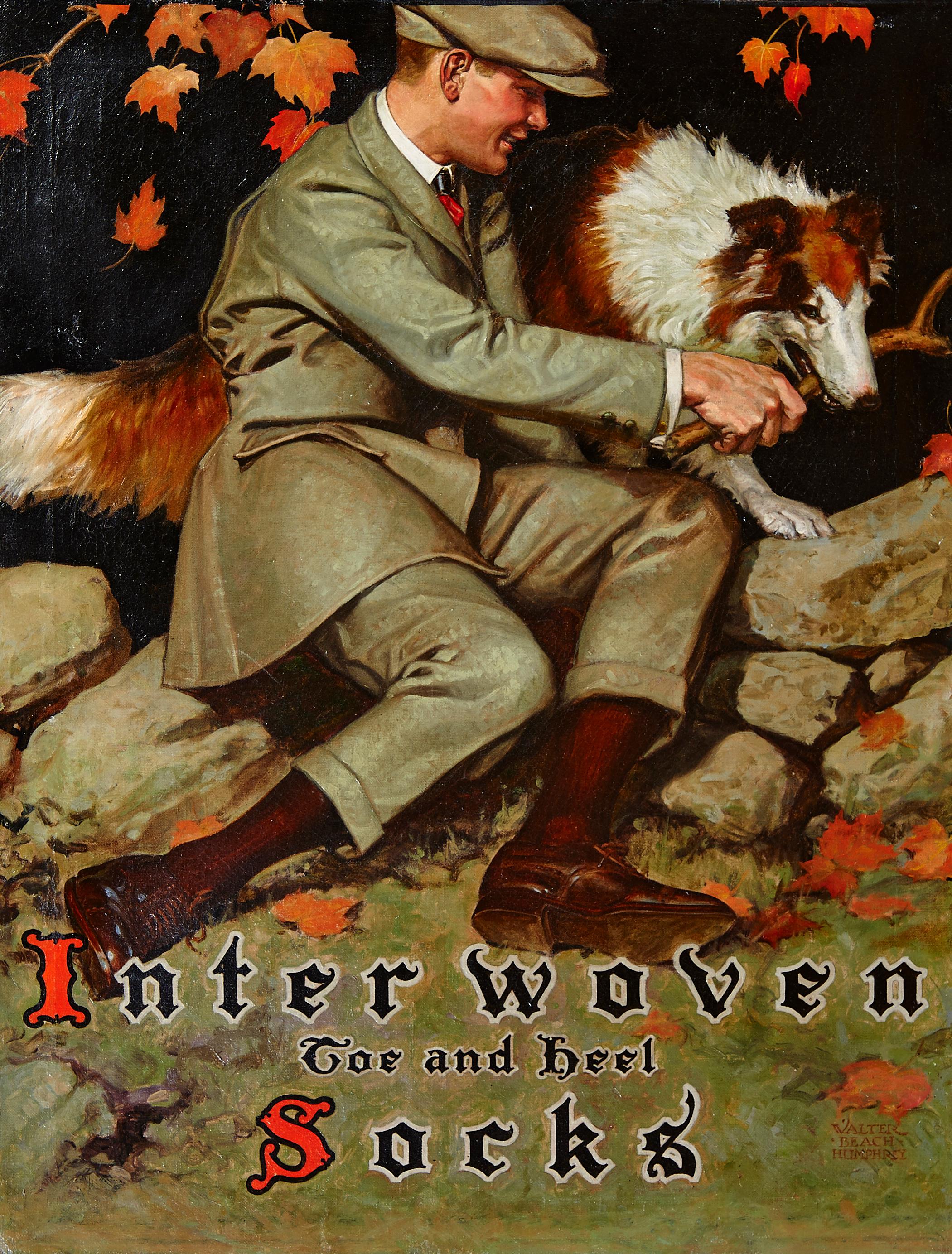Items Similar to A Restful Moment in the Harem
Want more images or videos?
Request additional images or videos from the seller
1 of 8
William Gale (British)A Restful Moment in the HaremLate 19th century
Late 19th century
About the Item
William Gale
British
1823 - 1909
A Restful Moment
signed with artist's monogram WG lower left
oil on canvas
Unframed: 30.6 by 41cm., 12 by 16¼in.
Framed: 52 by 62cm., 20½ by 24½in.
William Gale was a talented history and genre oil painter, born in London in 1823. He won many accolades as a student at Royal Academy Schools, and travelled to Italy in 1851 and the Middle East in 1862 and 1867. Due to his many influences , Gale's paintings are in an array of styles including sentimental, biblical, mythological subjects, portraits and orientalist pictures. Examples of his work are held by the Tate, Glasgow City Art Galleries and Museums and Art Gallery of New South Wales.
William Gale was one of the many artists who, upon finishing his study at the Royal Academy Schools, set out to explore the east: namely North Africa, Algeria, Palestine and Syria. These remote countries at the crossroads of civilizations captivated his imagination, which he explored through his work.
Following in the footsteps of the great Orientalists John Frederic Lewis and Jean Leon Gerome, William Gale evokes the Eastern Woman, the bright colors and delicate textures that can be found in the East. Using pure, rich glazes and extraordinary attention to detail, he renders the luxurious, beautifully embroidered headscarf. Eastern women kindled a curiosity in almost every Orientalist artist with their gaudy shawls and yakmash, heavy jewelry and enigmatic beauty.
- Creator:William Gale (British) (1823 - 1909)
- Creation Year:Late 19th century
- Dimensions:Height: 12 in (30.48 cm)Width: 16.13 in (40.98 cm)Depth: 3 in (7.62 cm)
- Medium:
- Period:
- Condition:
- Gallery Location:New York, NY
- Reference Number:
About the Seller
5.0
Vetted Seller
These experienced sellers undergo a comprehensive evaluation by our team of in-house experts.
1stDibs seller since 2019
17 sales on 1stDibs
Typical response time: <1 hour
- ShippingRetrieving quote...Ships From: New York, NY
- Return PolicyA return for this item may be initiated within 2 days of delivery.
More From This SellerView All
- Exquisite Painting of an Odalisque by Federico Jiminez Fernandez (1841-1910)Located in New York, NYOdalisque by Federico Jiminez Fernandez (1841-1910) Female figure sits next to an open window which casts bright sunlight onto her face. A tapestry sits behind her, hung on the wa...Category
19th Century Portrait Paintings
MaterialsCanvas, Oil
- Portrait of An Early 1900's Lady by Timoleon Marie LobrichonBy Timoleon Marie LobrichonLocated in New York, NYA large and striking female portrait titled "Red Umbrella" by Timoleon Marie Lobrichon (French, 1831-1914) This darling young woman portrait wearing an early 1900's light pink and green satin dress. Her delicate and beautifully rendered hands reach into the light as her face and upper body are carefully shaded by the lush greenery around her. A half moon brooch...Category
Early 20th Century Victorian Portrait Paintings
MaterialsCanvas, Oil
- A Fine Portrait Painting Entitled ‘Isabella’ by Emile Eisman-SemenowskyBy Émile Eisman-SemenowskyLocated in New York, NYTitle: Isabella Artist: Emile Eisman-Semenowsky (1857-1911) Origin: Polish/French Date: Early 20th century Medium: Oil on canvas Signature: signed and inscribed 'EISMAN-SEMENOWSKY/PA...Category
Early 20th Century Other Art Style Portrait Paintings
MaterialsCanvas, Oil
- FuanesseBy Guillaume SeignacLocated in New York, NYGUILLAUME SEIGNAC French, 1870-1924 Fuanesse Signed 'G. Seignac' Oil on canvas 32 x 26 inchesCategory
Late 19th Century Portrait Paintings
MaterialsOil, Canvas
- A Fine Stiepevich Orientalist Painting of a Harem Girl with a LuteLocated in New York, NYVINCENT G. STIEPEVICH Russian, 1841-1910 Harem Girl with a Lute Signed ‘VG. Stiepevich’ L/R Oil on canvas 24 x 18 inches Frame: 31.375 X 25.25 inchesCategory
1890s Portrait Paintings
MaterialsOil, Canvas
- A fine Edmund Adler Painting of Children Gathered in a ParlorBy Edmund AdlerLocated in New York, NYEDMUND ADLER Austrian, 1876-1965 Children Gathered in a Parlor Signed Edmund Adler l.l.; also numbered 21767 on verso Oil on canvas 21 1/4 x 26 1/2 inchesCategory
20th Century Portrait Paintings
MaterialsOil, Canvas
You May Also Like
- "First words to two women" by Gilbert Pauli - Oil on canvasBy Gilbert PauliLocated in Geneva, CHBorn in 1944 in the canton of Fribourg, Gilbert Pauli currently lives in Geneva, where he devotes himself to painting and sculpture, a passion he developed from his childhood. His favorite theme is the dialogue between the human being and his creator. Gilbert Pauli's messages are universal, without any racial, religious or even cultural reference, with the sole purpose of love for man. From 1986, he worked relentlessly and in a self-taught way to discover the different painting and sculpture techniques: first gouache, followed by dry pastel. These lead him to watercolor, and oil, through charcoal and acrylic. He died in Geneva in 2020 and the Gijsel Gallery...Category
1990s Symbolist Portrait Paintings
MaterialsCanvas, Oil
- Female Cornish artist, Walter Sickert pupil, Cubist portrait of man in interiorLocated in Harkstead, GBA really stylish portrait of a young man relaxing in an interior, painted in a unique, almost cubist style and wonderful texture to the brushwork. Garlick Barnes ( 1891-1987) A man reading in an interior Signed Oil on canvas 24 x 20 inches without frame 29 x 24½ inches with frame Barnes raised four children before turning her full attention to art. She studied at the Sidney Cooper School of Art, Canterbury, and at Heatherley's. In 1936 Garlick became a pupil of Walter Richard SICKERT...Category
20th Century Modern Interior Paintings
MaterialsCanvas, Oil
- Portrait of a Welsh Miner from 1930s, Welsh ArtLocated in Harkstead, GBAn incredibly rare work by the artist dating to 1932. In subject matter, it brings to mind William Roberts but with a more linear and sculptural style. John Bromfield Gay Rees (1912...Category
Early 20th Century Modern Portrait Paintings
MaterialsOil, Canvas
- Reflections of Contemplation by German Artist Karl Weise, Candle Light GenreLocated in Stockholm, SEThis painting features a young girl sitting on a chair in a dimly lit room, illuminated by the soft glow of an orange-tinted ceiling lamp. This painting captures the essence of the candle-light genre of art, which originated in the 17th century and was popularized by Dutch and Flemish artists. The candle-light paintings were characterized by the use of a single source of light, which was usually a candle, and were often accompanied by the inclusion of reflective surfaces such as mirrors, to create an ambiance of warmth and intimacy. Weise's painting is a beautiful example of this genre, as he uses the same technique of a single source of light to create a sense of depth and realism in the painting. The girl in the painting is dressed in a vibrant red dress and white stockings, and her expression suggests a moment of contemplation. On the table, there is a photo frame, perhaps containing a picture of someone dear to her, and its reflection is visible in the mirror in the background. The piano on the right side of the painting is in shadow, while above it is a portrait painting with a golden frame, which adds to the ambiance of the room. Karl Weise was a renowned painter known for his exceptional use of light and shadow in his paintings, which created a mesmerizing play of light that evoked a sense of depth and realism in his work. His paintings were highly appreciated during his lifetime, and they continue to be admired today for their timeless beauty and artistic merit. In conclusion, Karl Weise's painting is a beautiful example of the candle-light genre of art. The use of a single source of light creates a warm and intimate ambiance, while the shadows add depth and dimension to the painting. The young girl's expression and the inclusion of the photo frame and portrait painting add a sense of storytelling to the painting, making it a truly captivating classic artwork...Category
1910s Realist Interior Paintings
MaterialsOil, Canvas
- Cubist Portrait of Gabriele Varese (in Italian uniform), 1919Located in Stockholm, SEDick Beer (b. London 1893 - d. Stockholm 1938) Portrait of Gabriele Varese (in Italian uniform), 1919 oil on canvas mounted on panel 116 x 90 cm stamp signature Exhibited: Solo exhibition, Stockholm, Nov-Dec 1917; The Royal Academy Stockholm 1973; Åmells Konsthandel – En internationell kubist, Stockholm & London 2008 Hälsinglands Museum 2011 Millesgården – Dick Beer – Impressionist & Kubist, 2012 Provenance: Within the family Beer until today Dick Beer was born in 1893 in London as Richard Beer, the youngest of five brothers. His father, John Beer (1853-1906), was a watercolourist who was born in Stockholm and had left Sweden at the age of 17. John Beer instructed his sons in drawing and painting, among other things. A number of sketchbooks bear testimony to the boys’ talent. Dick Beer’s parents died in 1906 and 1907. Barely 15 years old, Beer arrived in Sweden as an orphan. First he lived with relatives and finally he ended up at Reverend Laurell in Västergötland. Dick Beer began his artistic studies at the Althin School of Painting in Stockholm in 1908 and continued at the Royal Academy of Arts in the autumn of 1910, but in September 1912 he broke off his studies and travelled to Paris. He rented a studio and enrolled at the Colarossi and Grande Chaumière academies. In the summer of 1913, Dick Beer travelled to Pont-Aven in Bretagne in order to paint. In September the same year, he held his first solo exhibition in Stockholm which he gave the French title Exposition des tableaux de Bretagne et autour de Paris. The exhibition proved a success. Many of the paintings were executed in a light palette in a style inspired by the impressionists. In 1914, Dick Beer undertook an extensive study trip to Italy, Tunis, Morocco and Spain, which resulted in canvases overflowing with colours and light. When the French army mobilised, he volunteered and was enlisted in the French Foreign Legion. In 1915 Dick Beer sustained severe head injuries in a grenade attack, which resulted in deafness and a nervous condition that would plague him for the rest of his life. Two of his brothers died the following year, fighting for the English army. Dick Beer was hospitalised and convalesced at Château de Rochefort. Here he started painting again, in an impressionist style, a painting dominated by blue and green hues. In 1918, Dick Beer married Ruth Öhrling, a dentist, and their son John was born later in the year. During this time, Beer began experimenting with cubist painting and created several large compositions, including the painting “The Arab Café”. In the years that followed, Dick Beer was based in Paris, where he often moved house. He was instructed by André Lhote, who encouraged his students to work freely in the studio and provided them with individual critique. Beer often travelled to Bretagne or Provence. His artist friends came from all over Europe and included Amedeo Modigliani. Dick Beer exhibited fairly regularly in Paris between 1919 and 1934 and made a name for himself in French artist circles. In the summers, Ruth regularly rented a house in the countryside, often at Lake Mälaren. She kept a large house with many models and friends and there was a lot of painting and discussions. In 1933, the couple divorced but Ruth still loved Dick and continued to support him financially for the rest of his life. Dick Beer also exhibited in Sweden, albeit irregularly due to his failing health. In the 1920s and 1930s, Beer continued to pursue an expressionist painting with intense colours and unexpected perspectives, but eventually he veered towards more naturalistic forms, including a large number of nudes. He also painted several portraits of artists, politicians and writers. In 1938, Dick Beer sojourned in Arles. The budding photographer Christer Strömholm...Category
1910s Cubist Portrait Paintings
MaterialsCanvas, Oil, Panel
- Lost in Thoughts, Oil Sketch Painted in Brittany (Bretagne), Before 1890Located in Stockholm, SEWe are delighted to offer a unique and evocative piece by the Swedish artist Ingeborg Westfelt-Eggertz. This small oil sketch captures a moment in time, portraying a young man seated...Category
1880s Landscape Paintings
MaterialsCanvas, Masonite, Oil



